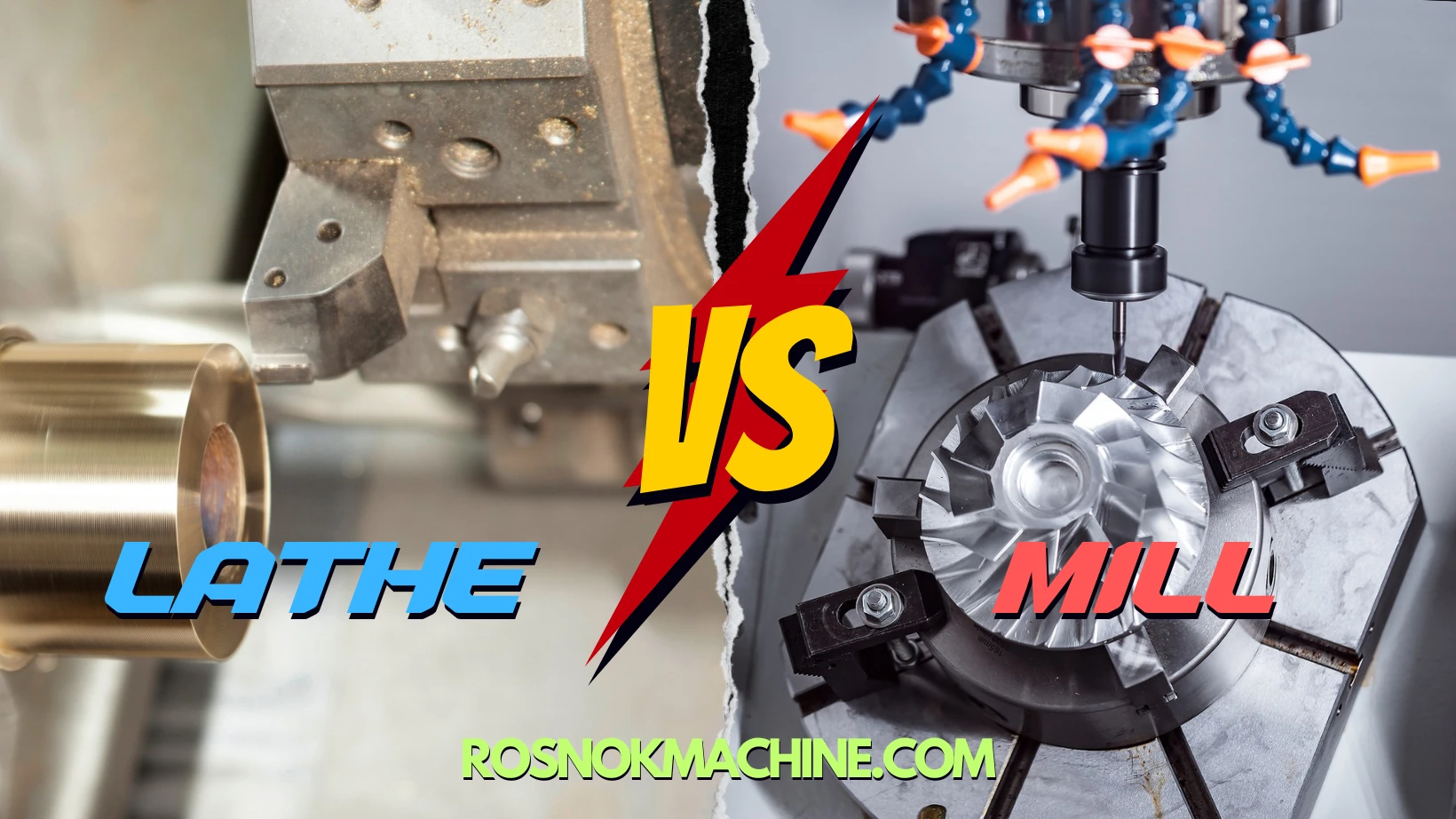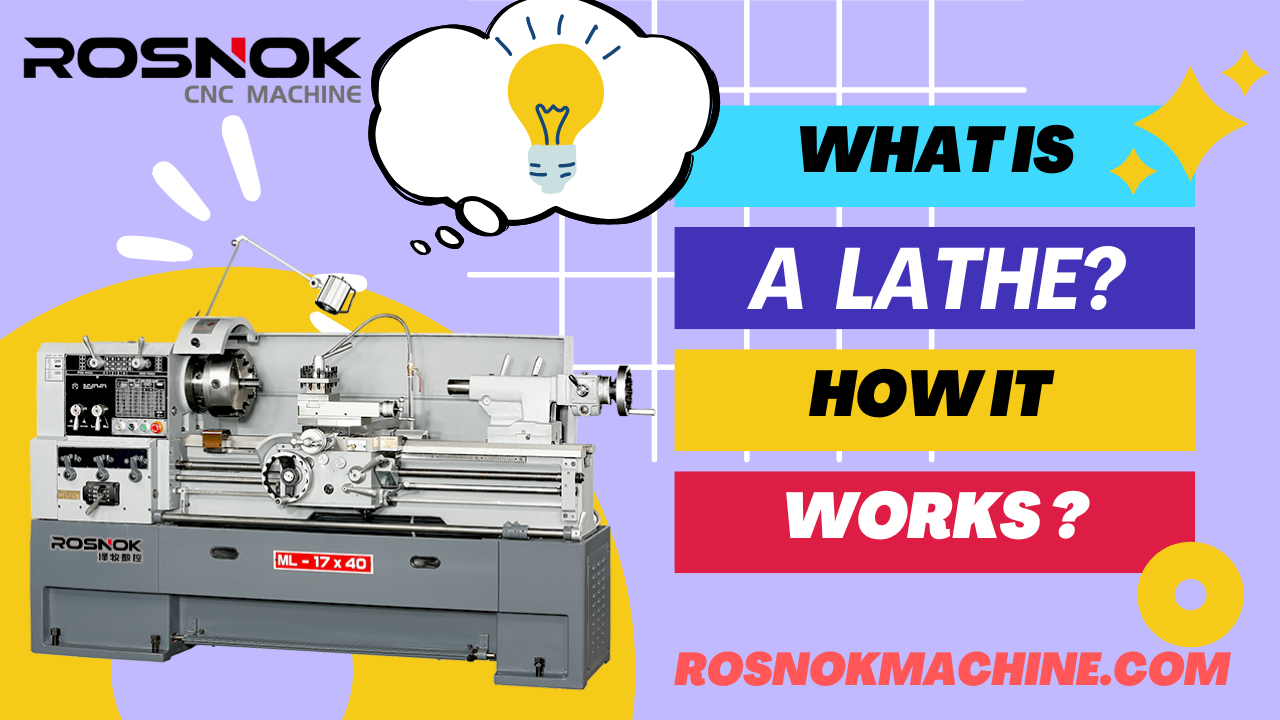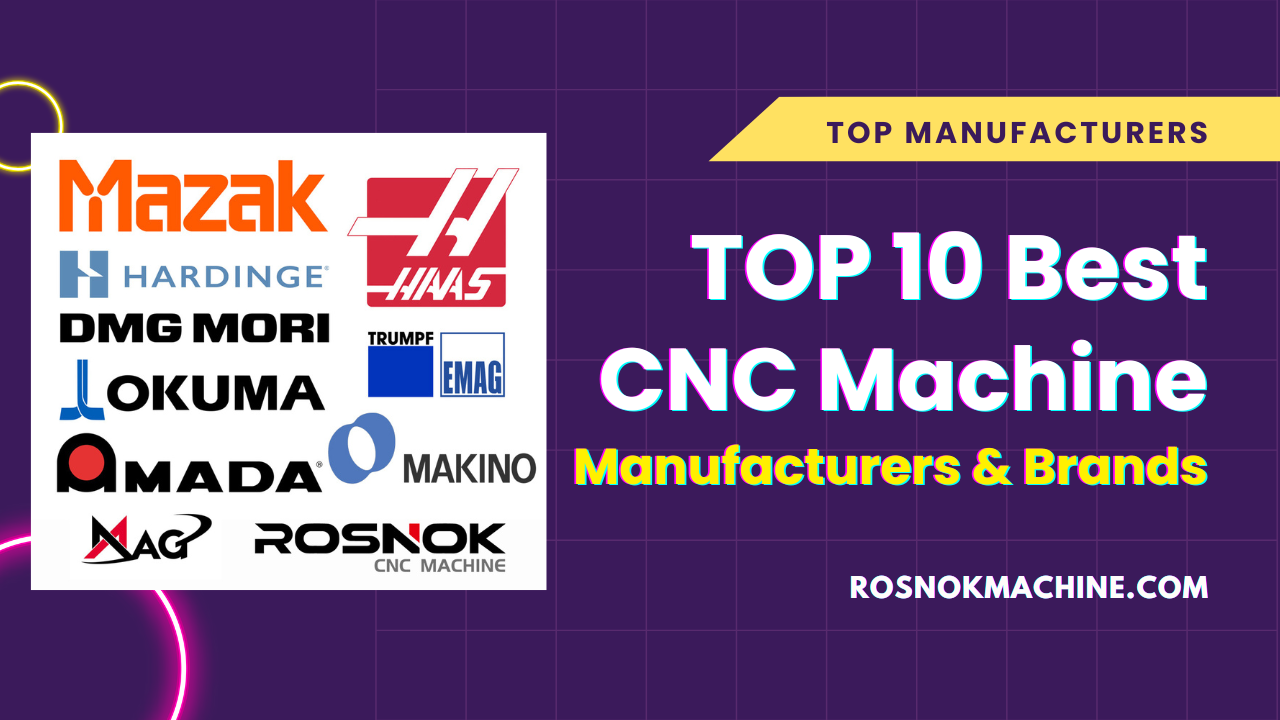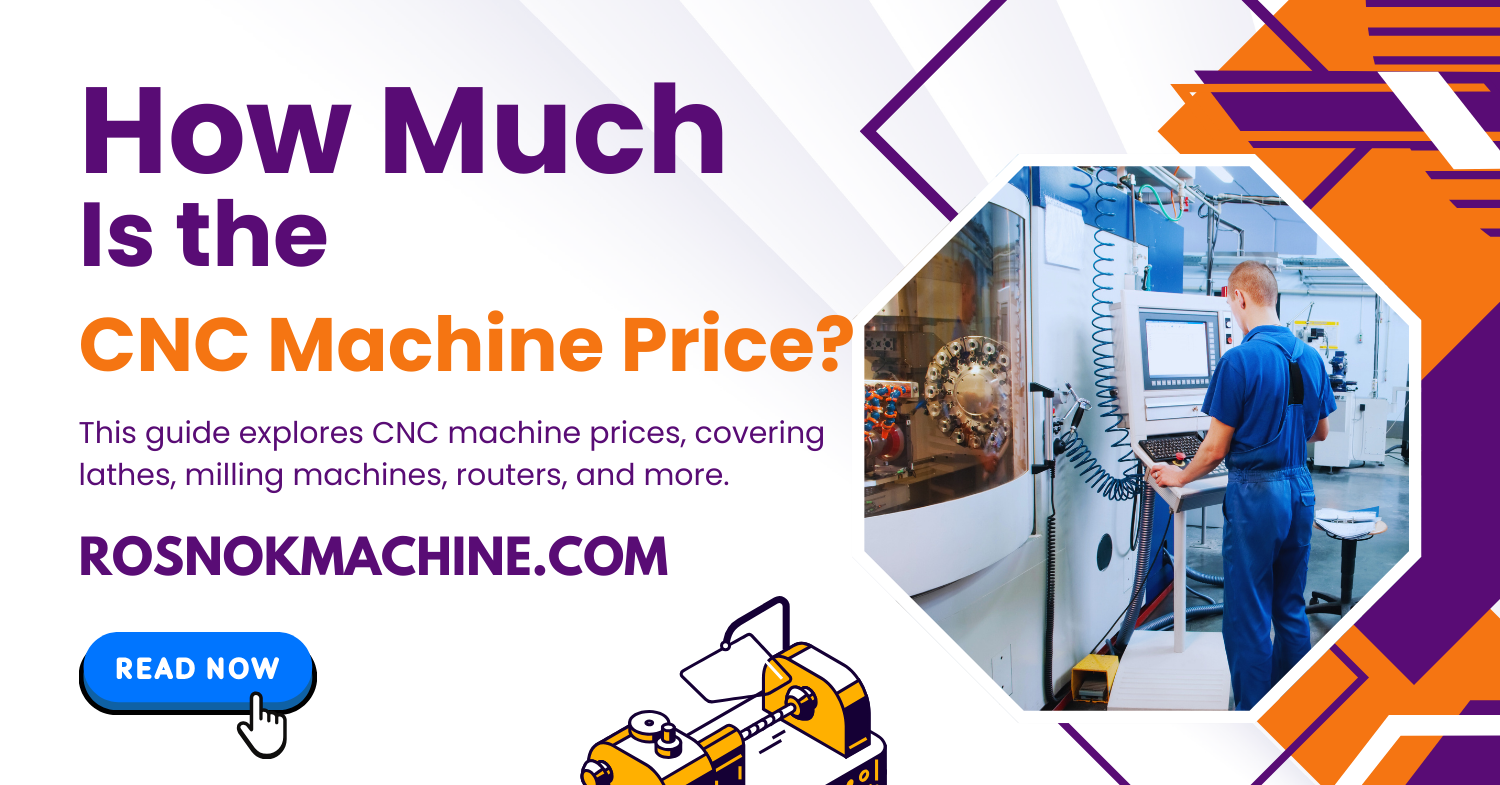Are you considering investing in a lathe machine but unsure about the lathe machine price in 2025? With so many models on the market — from compact bench-top lathes to large industrial pipe-threading machines — choosing the right machine at the right price can be confusing. Should you pick a cost-effective entry-level model, or does your application demand a premium high-precision solution? And what exactly causes prices to vary so widely? If these questions sound familiar, you’re in the right place.
The lathe machine price in 2025 generally ranges from $1,000 to $60,000 or more, depending on the machine type, size, spindle structure, automation level, and control system. Entry-level CNC lathes are suitable for simple turning tasks, while high-end models like pipe threading or Swiss-type lathes offer greater precision and flexibility for complex production. Choosing the right lathe means balancing your budget with your long-term production needs.
In this guide, I’ll walk you through the real-world lathe machine price ranges, cost-driving factors, hidden expenses, and tips to help you invest in smart
What Is a Lathe Machine? A Quick Overview
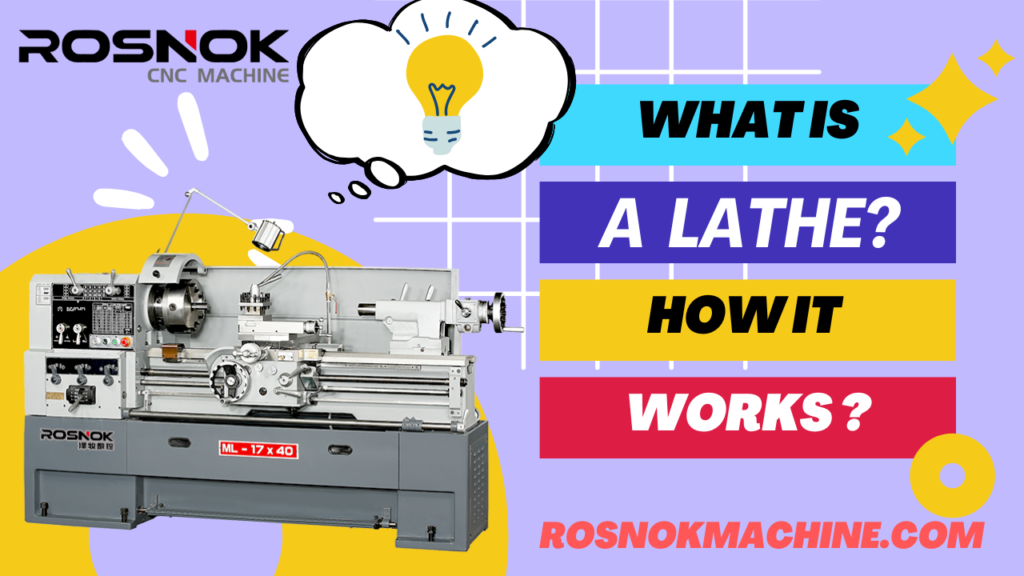
Understanding the lathe machine price starts with knowing what a lathe machine does—and why it’s so widely used across industries. A lathe machine is a fundamental tool used in machining operations. It rotates a workpiece around a fixed axis while a cutting tool removes material to create symmetrical parts. The process is commonly used to produce shafts, bushings, flanges, rings, and threads—components required across various industrial sectors.
Lathes are essential in industries like automotive, aerospace, power generation, oil & gas, and heavy equipment manufacturing. Their popularity lies in their ability to deliver accurate, repeatable results with relatively simple setups.
With the evolution of technology, the market now offers a broad variety of lathes—ranging from basic manual models to fully automated CNC systems. This diversity means that the lathe machine price can vary greatly depending on the type and level of automation.
Common Types of Lathe Machines
Understanding the main types of lathes helps buyers select the right model for their needs. Each type has different capabilities, and is used in specific environments.
- Manual Lathe – Traditional machines controlled by hand, ideal for prototyping or repair work.
- Bench Lathe – Also called desktop lathes, compact in size and used for small parts or training purposes.
- Flat-bed CNC Lathe – A widely used CNC machine ideal for general-purpose turning. Found in many small-to-medium factories.
- Pipe Threading Lathe – Designed for threading pipe ends, commonly used in plumbing, oilfield, and energy applications.
- Vertical Lathe – Suited for heavy, large-diameter components like valve bodies, bearings, and turbines.
- Swiss-Type CNC Lathe – Precision-focused machines capable of producing tiny, complex parts with micron-level tolerance.
- Slant-bed CNC Lathe – Known for high-speed machining and chip removal. Perfect for mass production.
- Wood Lathe – Specialized for woodturning in furniture, decor, and artisan work.
- Mini Lathe – Small and portable, used for hobby projects, teaching, or simple repairs.
- Universal Lathe – Multi-function lathe capable of handling both cylindrical and face work. Often seen in flexible production environments.
Each type serves different industries and applications. As a result, buyers should consider their production needs before comparing models or evaluating any lathe machine cost.
Why Choosing the Right Type Matters
Choosing the right lathe model ensures your investment meets current production demands and can scale with your future goals. Whether you’re machining long shafts for automotive use or crafting detailed components for aerospace, the type of lathe you choose will directly affect your shop’s flexibility, productivity, and long-term efficiency.
Now that you’re familiar with the core types, the next step is to understand why the lathe machine price truly matters—and what it represents beyond just the upfront cost.
2. Why Lathe Machine Price Matters More Than You Think
Understanding the lathe machine price isn’t just about comparing numbers on a supplier’s quote sheet. It’s about understanding the full value a machine brings to your production line over time—beyond the initial purchase.
Many buyers fall into the trap of choosing a lathe based only on its listed price. But in reality, a low-cost machine with poor rigidity, inconsistent precision, or weak after-sales support can lead to bigger losses: frequent breakdowns, production delays, rework, and higher tooling costs.

A Lathe Is Not Just a Tool—It’s a Production Partner
When you invest in a lathe, you’re not just buying a machine—you’re investing in your workflow. Every hour of spindle runtime counts toward your bottom line. A reliable, high-precision machine allows you to meet customer tolerances consistently, run longer batches, and reduce inspection failures.
On the other hand, if the machine lacks stability or wears quickly, it can compromise the accuracy of your parts. That means rework, material waste, late deliveries, and even damaged client trust—all of which cost more than any discount saved on a cheaper unit.
What a Higher Price May Actually Buy You
A higher lathe machine cost often means you’re paying for:
- More durable construction that maintains accuracy longer
- Advanced control systems for better automation and repeatability
- Faster cycle times that boost output per shift
- Enhanced spindle design for smoother finishes and less vibration
- Global certifications for quality, safety, and export compliance
- Responsive after-sales support that reduces downtime
In many cases, what seems like a higher price today is actually a lower cost per part over months or years of production.
The Hidden Cost of Buying Cheap
It’s easy to find low-cost machines online or from unknown sources. But without proper support, spare parts, or proven quality, these “cheap” options often lead to serious production problems. Remember: the true cost of a lathe is not just in the machine—it’s in what happens when it fails.
As a manufacturer or distributor, you don’t just want a machine that works—you want one that works well, reliably, and profitably. That’s why we always advise customers to consider value over price, especially for high-demand production environments.
In the next section, we’ll break down the key factors that actually influence lathe machine price, so you can make informed comparisons and smarter purchasing decisions.
Key Factors That Influence Lathe Machine Price
The lathe machine price isn’t random—it’s the result of many technical and structural factors that define a machine’s capability, durability, and performance. Whether you’re sourcing one unit or building a full line, understanding what drives the cost will help you compare models more effectively and avoid costly mismatches.
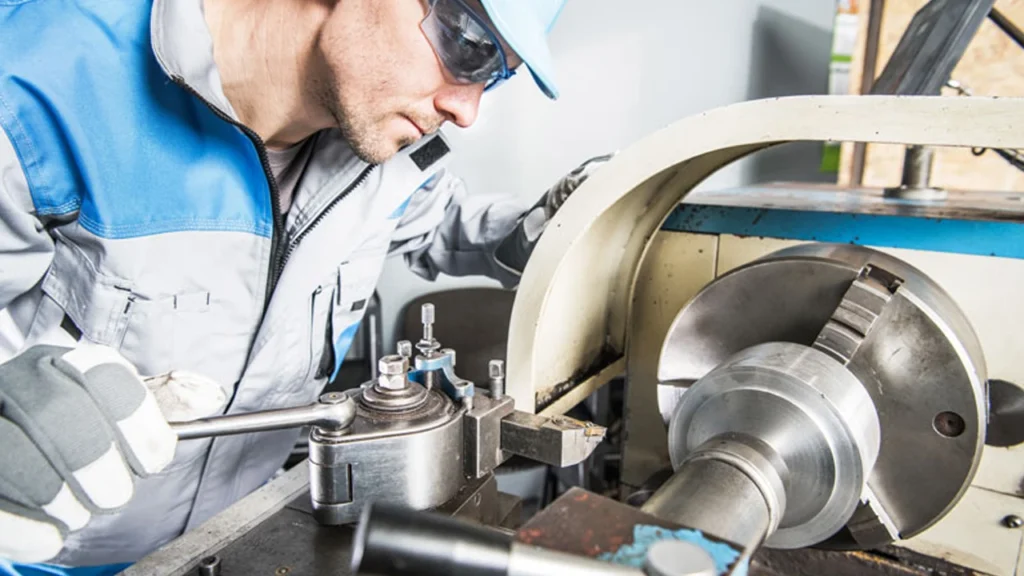
1. Machine Bed Structure and Rigidity
The bed of a lathe is its structural backbone. A heavier, more rigid bed absorbs vibration better, reduces chatter, and helps maintain precision over long runs. Cast iron or slant-bed designs generally offer superior support, especially for heavy workpieces or deep cuts. Entry-level machines with lighter frames may cost less upfront but often struggle with stability in demanding applications.
2. Spindle Configuration and Power
Spindles come in different bore sizes, speed ranges, and motor configurations. High-torque spindles are necessary for machining steel or large-diameter parts, while high-speed spindles are preferred for softer materials or fine finishing. Machines with servo-driven or air-cooled spindles cost more but offer higher performance and long-term stability.
3. CNC Control System and Software
The controller is the brain of any CNC lathe. Simple local controllers like GSK or KND keep costs low but offer limited programming capability. Advanced systems like Fanuc, Siemens, or Mitsubishi support more complex operations, reduce programming errors, and enhance productivity—though they add several thousand dollars to the total cnc lathe machine price.
4. Axis Count and Automation Level
Basic machines operate on two axes (X and Z), while advanced models may add Y-axis, live tooling, or sub-spindles. Add-ons like tool changers, bar feeders, or robotic arms increase speed and reduce labor costs—but they also increase upfront price. Multi-axis CNC lathes are more expensive, but they’re often the best choice for complex, high-volume work.
5. Accuracy, Tolerance, and Repeatability
High-precision lathes use premium ball screws, linear guides, and thermal stabilization systems to achieve repeatability down to 0.005mm or better. These are vital in medical, aerospace, and defense sectors. Machines with looser tolerances may cost less but are not suited for tight-spec applications.
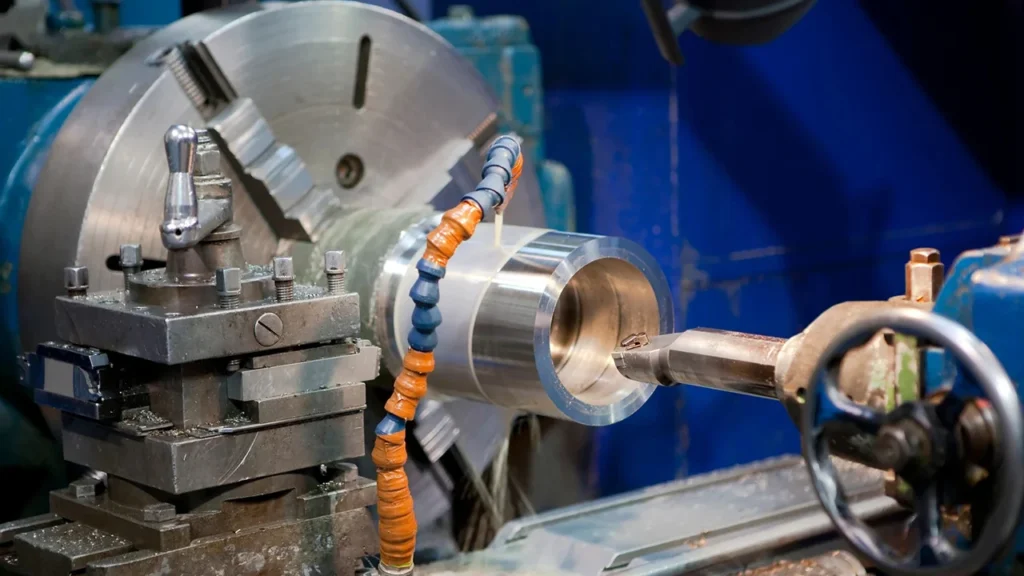
6. Build Materials and Component Origin
Lathes built with Taiwanese or Japanese spindles, German bearings, and name-brand electronics typically cost more but offer superior lifespan and support. In contrast, low-cost machines made entirely with unknown components may face more frequent failure and offer limited after-sales reliability.
7. Certification and Compliance
International buyers must also consider machines that comply with CE, ISO, or TÜV standards. These certifications may raise the initial lathe price, but they guarantee safety, quality, and export eligibility—often a requirement for buyers in Europe, South America, or high-standard sectors.
8. Brand and Country of Origin
Brand reputation and production origin significantly influence both lathe machine price and buyer confidence. Machines from well-known global or certified Chinese brands usually come at a premium, reflecting better components, tested performance, and accessible support networks. Buyers in Europe or South America often expect CE certification or proven quality standards, which directly increases the baseline cost.
9. Customization and Special Requirements
Standard machines are priced for general use. However, if your application demands non-standard bed lengths, dual spindles, specific tool changers, or automation integration, prices will rise accordingly. Even minor modifications like language-specific panels, upgraded enclosures, or workpiece sensors can elevate the lathe machine cost by 10–50% or more. Highly customized machines often require special design, tooling, and after-sales planning—factors that must be reflected in the quotation.
Types of CNC Lathes and Their Costs
The lathe machine price can vary dramatically based on the type of equipment you choose. From compact manual lathes to advanced Swiss-type CNC machines, each type serves a specific purpose and comes with a different level of cost and capability.
Below is a structured overview of the 10 most common lathe types in 2025, arranged in the standard classification sequence, with insights into their typical costs, functions, and applications.
Manual Lathe
Manual lathes are the foundation of metal turning. Controlled by hand using levers and wheels, they are widely used in repair workshops, tool rooms, and prototyping facilities. These machines are ideal for producing single units or testing small runs before moving to automated production.
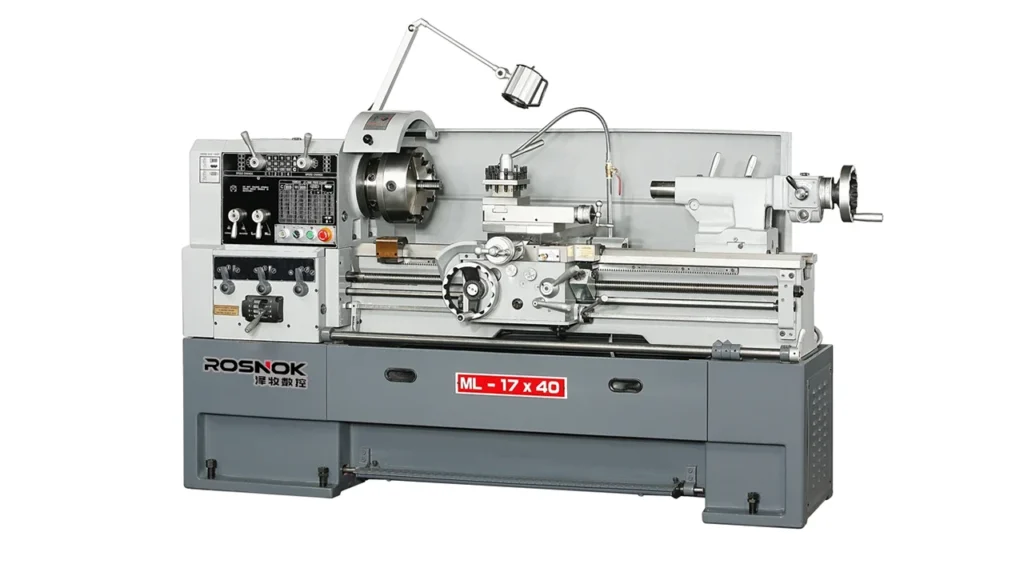
Features: Hands-on control, no automation, flexible setup
Manual lathe price: $3,000–$10,000
Best for: Prototyping, repair shops, mechanical training labs
Price Breakdown by Application
| Application Type | Typical Price (USD) | Description |
|---|---|---|
| General Workshop Use | $3,000 – $5,000 | Basic manual machines, ideal for simple repairs and prototypes |
| Gear-driven Manual Lathe | $5,000 – $8,000 | Heavier machines with better torque and durability |
| Precision Manual Lathe | $8,000 – $10,000 | High-accuracy models used in labs or fine machining |
Bench Lathe
Also known as desktop or tabletop lathes, bench lathes are compact machines designed for small parts and training purposes. Commonly used in technical schools or by hobbyists, they are easy to operate and require minimal floor space.
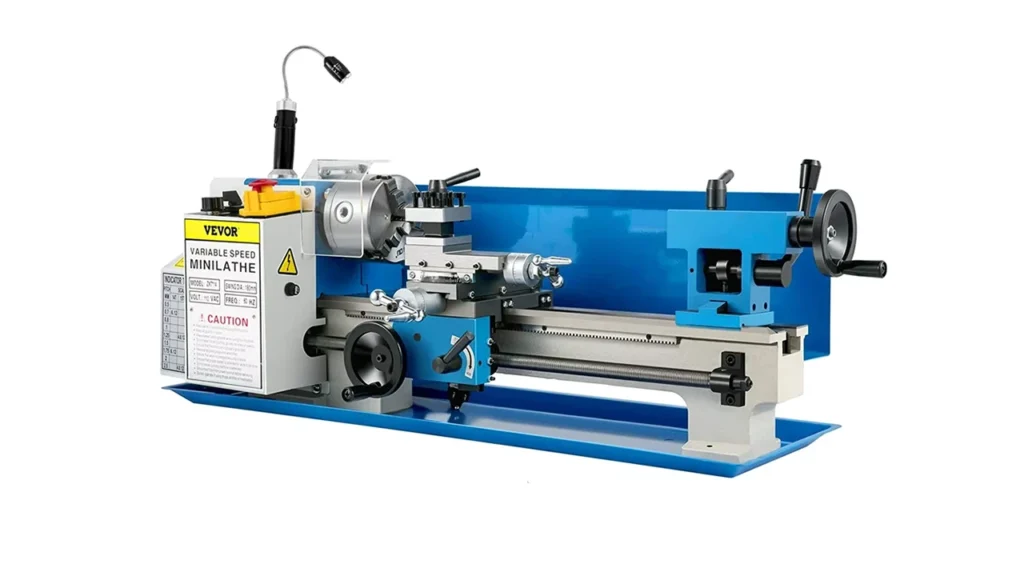
Features: Small footprint, manually controlled, often used for training
Bench lathe machine price: $800–$3,500
Best for: Vocational schools, entry-level repair, small component testing
Price Breakdown by Application
| Application Type | Typical Price (USD) | Description |
|---|---|---|
| Educational / Light-duty Bench Lathe | $800 – $2,500 | Basic 180/210 series (e.g., CJ0618, CJ0620), used for training and sampling |
| Precision Bench Lathe for Metal | $2,500 – $5,500 | Equipped with DRO or auto feed, used in R&D or fine-part machining |
| High-end Imported Bench Lathe | $6,000 – $8,000+ | Japan/German brands with advanced controls, often beyond classic bench use |
Flat-bed CNC Lathe
Flat-bed CNC lathes are one of the most widely used machines in general machining industries. Their open and simple design makes them a cost-effective solution for shafts, bushings, flanges, and medium-tolerance components. They are ideal for entry- to mid-level production.
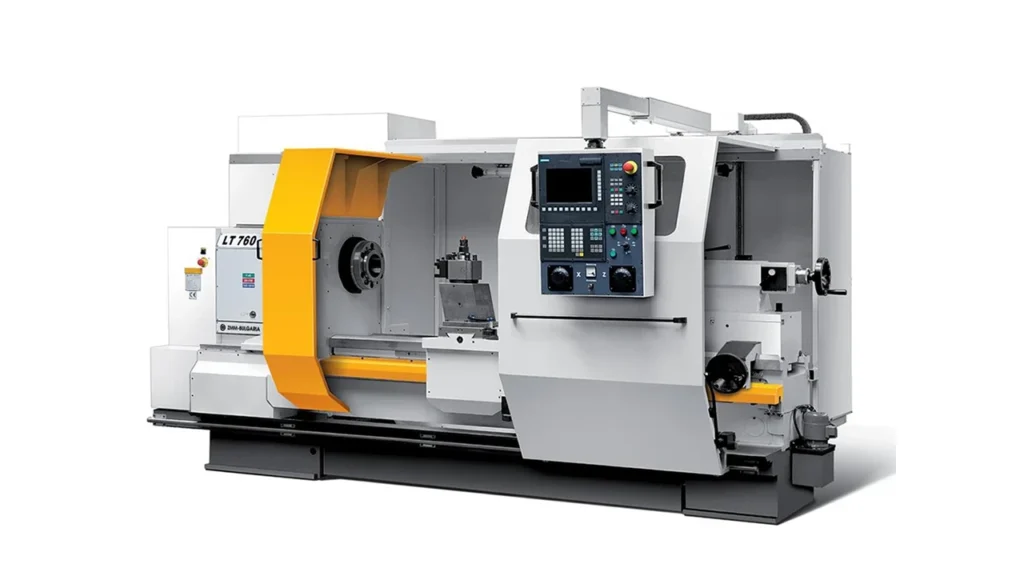
Features: Basic automation, open structure, reliable performance
Flat-bed CNC lathe price: $8,000–$15,000
Best for: Automotive parts, mechanical workshops, general metal turning
Price Breakdown by Application
| Application Type | Typical Price (USD) | Description |
|---|---|---|
| Basic Flat-bed CNC Lathe | $8,000 – $12,000 | 2-axis machines with GSK or Siemens controller |
| Mid-range Flat-bed Lathe | $12,000 – $15,000 | With servo tailstock or extended bed length for shaft turning |
Pipe Threading Lathe
Pipe threading lathes are specially designed to cut threads on the ends of long or wide-diameter pipes. With a reinforced structure and wide spindle bores, they are essential for pipeline and oilfield component production.
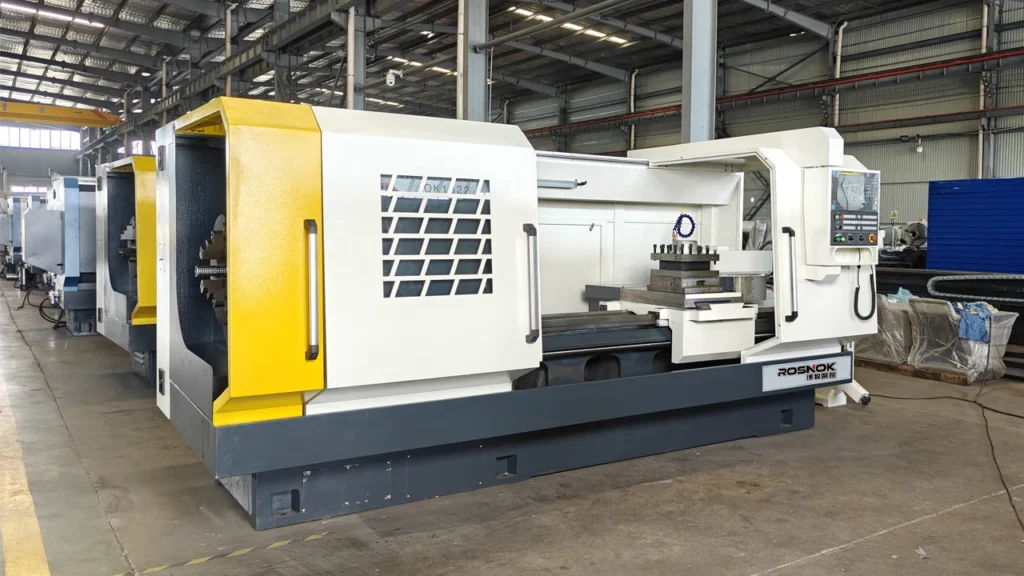
Features: Reinforced bed, threading gearbox, long-axis travel
Pipe threading lathe price: $20,000–$50,000
Best for: Oil & gas, infrastructure, water pipeline production
Price Breakdown by Application
| Application Type | Typical Price (USD) | Description |
|---|---|---|
| Standard Pipe Lathe | $20,000 – $35,000 | Threading for pipelines, plumbing, structural pipes |
| Heavy-duty Pipe Threading | $35,000 – $50,000 | High spindle torque, wide bore design for thick-wall pipes |
Vertical Lathe (VTL)
Vertical CNC lathes are designed for machining large, heavy parts that are difficult to mount horizontally. They offer better support for gravity-sensitive parts, making them common in aerospace, energy, and shipbuilding industries.
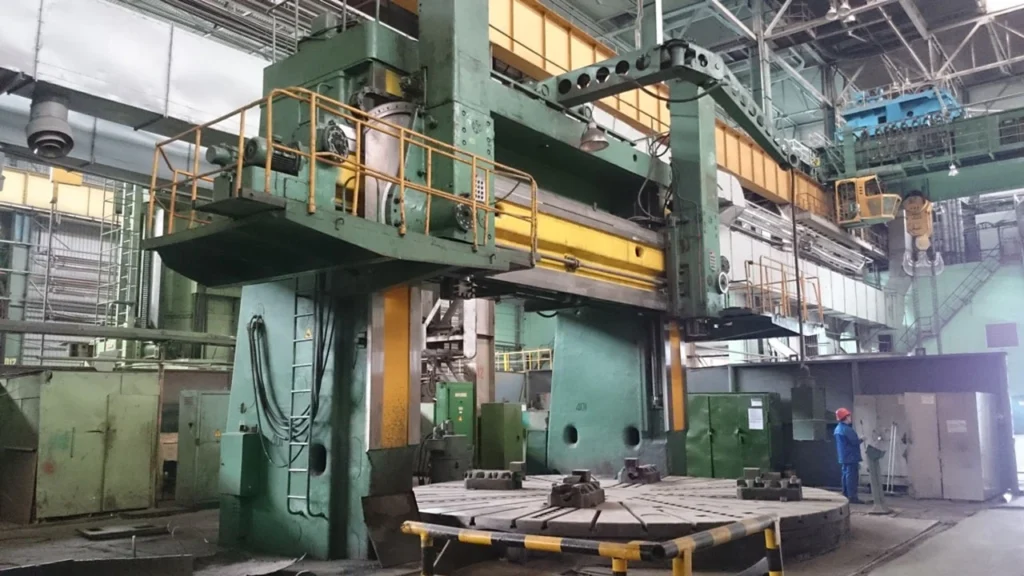
Features: Vertical spindle mount, heavy-duty support, strong stability
Vertical lathe machine price: $30,000–$70,000
Best for: Large castings, flanges, turbines, aerospace components
Price Breakdown by Application
| Application Type | Typical Price (USD) | Description |
|---|---|---|
| Entry-level Vertical Lathe | $30,000 – $45,000 | Suitable for large flanges and valve housings |
| Heavy-duty VTL | $45,000 – $70,000 | Handles heavy rotors and ship engine components |
Swiss-Type CNC Lathe
Swiss-type CNC lathes are the gold standard for ultra-precision and small part machining. With sliding headstock and live tooling, they excel in manufacturing medical, dental, and aerospace micro-components.
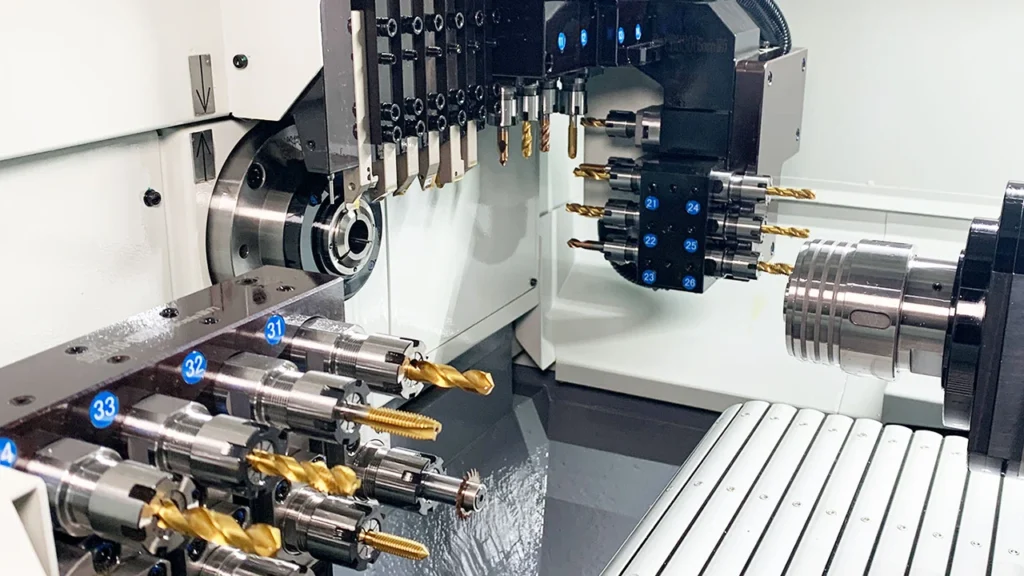
Features: Sliding head, multiple axes, high repeatability
Swiss lathe price: $40,000–$80,000+
Best for: Medical implants, precision electronics, aerospace pins
Price Breakdown by Application
| Application Type | Typical Price (USD) | Description |
|---|---|---|
| Basic Swiss CNC Lathe | $40,000 – $60,000 | Compact model for micro-parts and simple tools |
| High-end Swiss CNC | $60,000 – $80,000+ | Complex parts, multiple live tools, micron-level accuracy |
Slant-bed CNC Lathe
Slant-bed CNC lathes are built for fast chip removal and high-speed cutting. Their inclined structure enhances rigidity and support, making them ideal for continuous automated operation in production environments.
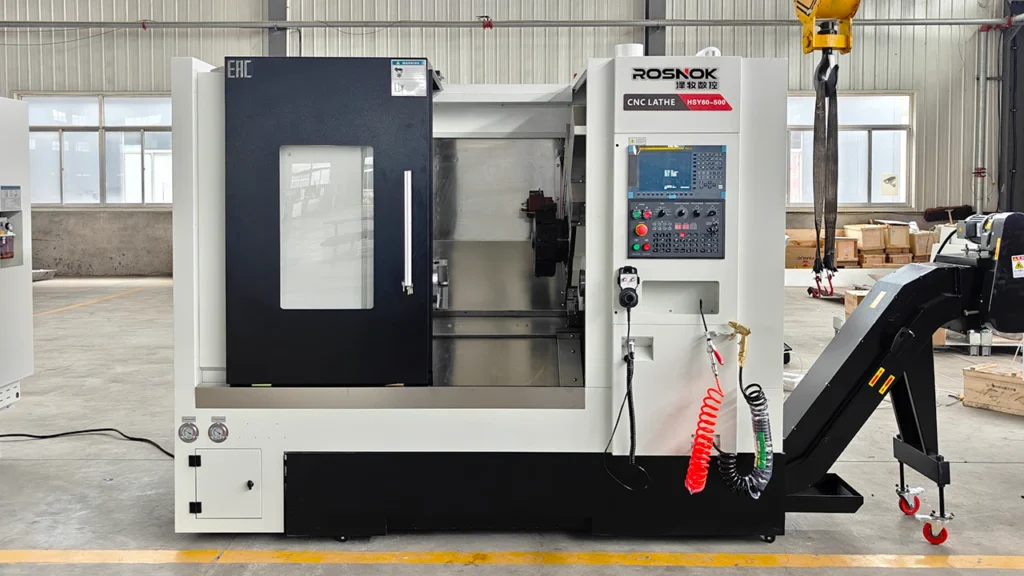
Features: Enclosed body, servo turret, high cycle speed
Slant-bed CNC lathe price: $15,000–$30,000
Best for: Automotive lines, volume production, unattended shifts
Price Breakdown by Application
| Application Type | Typical Price (USD) | Description |
|---|---|---|
| Entry-level Slant-bed Lathe | $15,000 – $20,000 | CNC lathe with inclined bed, basic turret |
| Production-grade Slant-bed | $20,000 – $30,000 | Multi-shift ready, chip conveyor and full enclosure |
Wood Lathe
Wood lathes are optimized for carving and profiling wooden objects such as balusters, stair legs, and decorative furniture parts. They combine CNC automation with high-speed rotation to boost wood production.
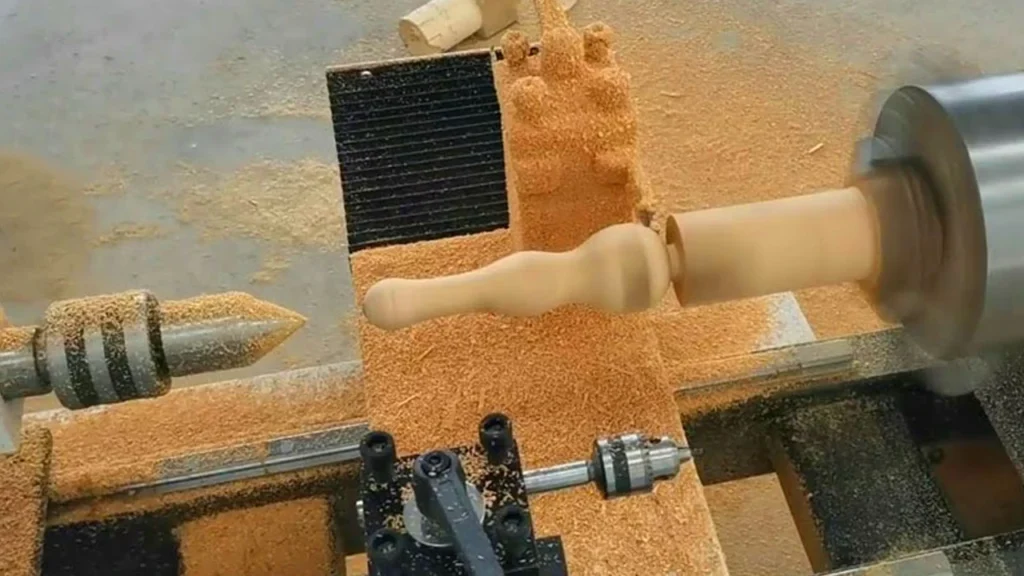
Features: High-speed spindle, 2D/3D contouring, dual-tool option
Wood CNC lathe price: $4,000–$12,000
Best for: Furniture factories, craftspeople, wood décor producers
Price Breakdown by Application
| Application Type | Typical Price (USD) | Description |
|---|---|---|
| Standard CNC Wood Lathe | $4,000 – $8,000 | Single-axis carving for standard shapes |
| Dual-axis CNC Wood Lathe | $8,000 – $12,000 | Handles complex curves and deeper 3D patterns |
Mini CNC Lathe
Mini CNC lathes are compact and affordable, aimed at educational training, hobby users, and labs that handle small-scale turning. They support basic 2-axis control and are perfect for simple operations.
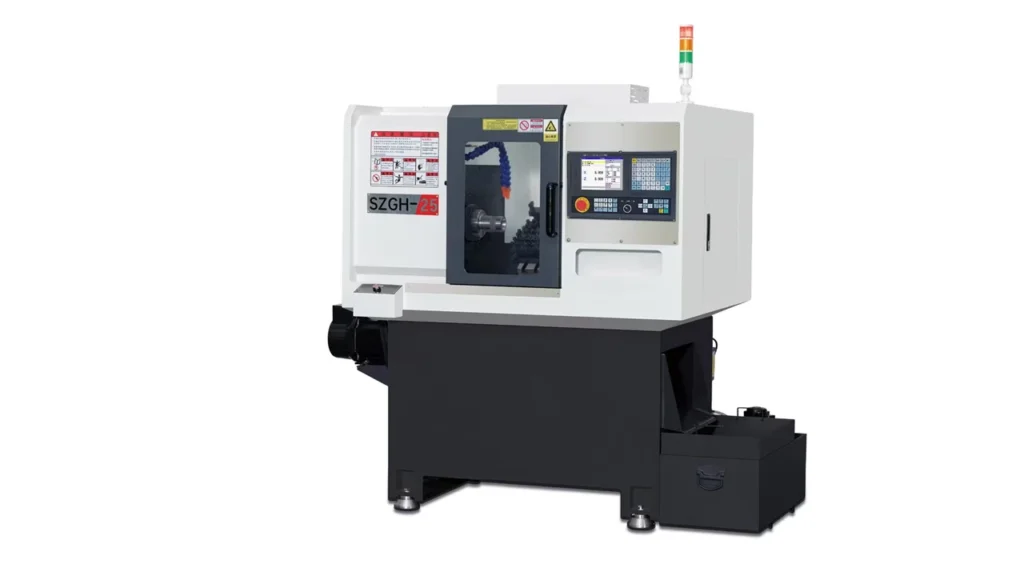
Features: Compact frame, simple interface, low voltage
Mini CNC lathe price: $2,000–$6,000
Best for: Schools, DIY workshops, micro-parts prototyping
Price Breakdown by Application
| Application Type | Typical Price (USD) | Description |
|---|---|---|
| Entry-level Mini CNC | $2,000 – $3,500 | Basic controller, hobby-focused frame |
| High-precision Mini CNC | $3,500 – $6,000 | Metal-ready model with servo system and better finish |
Universal CNC Lathe
Universal CNC lathes combine multiple functions like turning, boring, and sometimes milling. They support multiple axes and are commonly used in tooling or small-batch multi-process production.
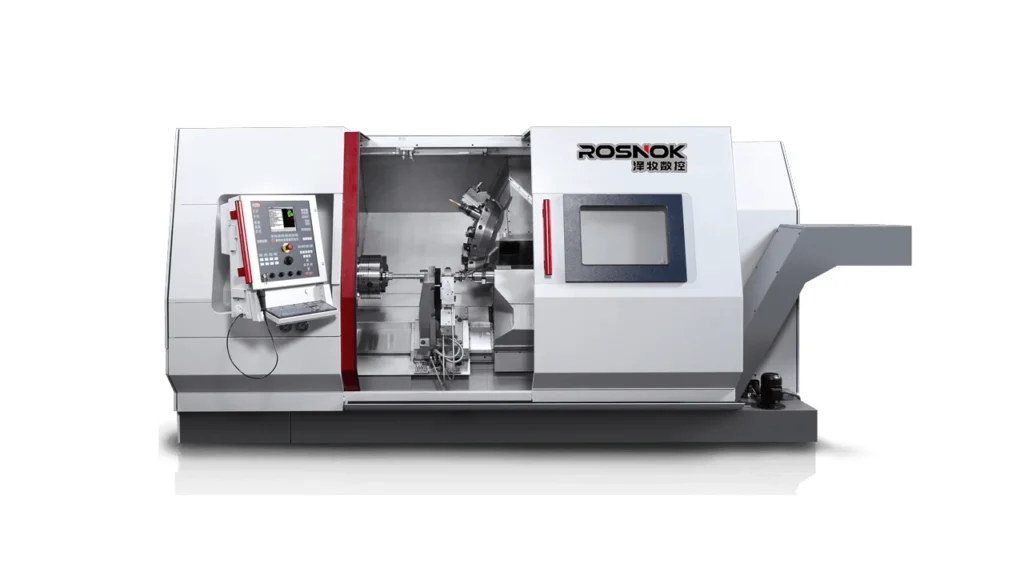
Features: Multi-axis support, programmable, tool turret equipped
Universal lathe machine price: $20,000–$60,000
Best for: Aerospace parts, tool rooms, mixed-part job shops
Price Breakdown by Application
| Application Type | Typical Price (USD) | Description |
|---|---|---|
| Basic Universal CNC Lathe | $20,000 – $35,000 | Turning + basic drilling for tooling centers |
| Advanced Multi-function CNC | $35,000 – $60,000 | Integrated live tooling, Y-axis, and sub-spindle |
Now that you’ve seen the wide range of lathe types and their associated costs, it’s clear that lathe machine price is not a one-size-fits-all figure. Each machine offers different capabilities, precision levels, and long-term value depending on its configuration and intended application. Whether you’re buying a mini lathe for training or a Swiss-type lathe for aerospace, knowing what you’re paying for helps you make a smarter investment.
But the visible price tag is only part of the equation. To truly understand the total cost of ownership, you’ll also need to account for hidden costs—like shipping, installation, tooling, and long-term maintenance.
Let’s break these down in the next section so you can avoid surprises before placing your order.
5. Hidden Costs to Consider Before Buying
When evaluating lathe machine price, most buyers focus only on the machine’s base cost. But the total cost of ownership (TCO) often includes a variety of hidden expenses that—if not planned for—can significantly affect your budget, ROI, and operational efficiency.
Here are the most common hidden costs you must factor in before making a final purchase decision.
Shipping and Taxes
CNC lathes are heavy, oversized industrial equipment. Depending on the size of the machine and your location, shipping costs can range from $500 to over $5,000, especially if you’re importing from overseas.
Additionally, international shipments may incur:
- Import duties
- VAT/GST
- Customs clearance fees
- Port handling charges
Always request a CIF (Cost, Insurance & Freight) quote or work with suppliers who provide DDP (Delivered Duty Paid) services to avoid hidden logistics expenses.
Installation and Commissioning
Once the machine arrives, you’ll need technicians to install and calibrate it. Depending on the complexity of the machine, installation can cost $1,000 to $10,000, especially for larger CNC lathes or multi-axis systems.
Key installation costs include:
- Site preparation (foundation, leveling)
- Electrical setup (380V, 3-phase connections)
- Air supply and cooling system connection
- On-site alignment and testing
Some suppliers offer “plug-and-play” support, but in most B2B cases, this step involves specialized technicians or local service providers.
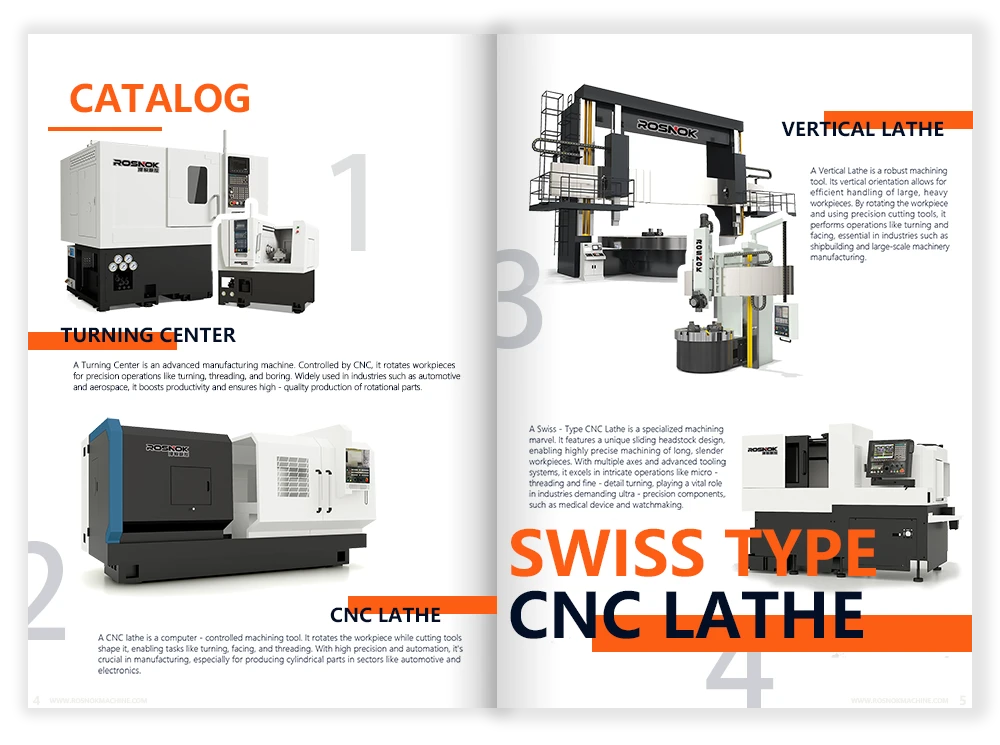
Tooling and Clamping System
CNC lathes don’t come with full tool sets. You’ll need to invest in:
- Turning tools
- Boring bars
- Threading inserts
- Tailstocks
- Tool holders
- Chucks or collets
For example, outfitting a Swiss-type CNC lathe may require an additional $5,000–$30,000 depending on the part geometry and precision needed. Even for simpler machines, tooling can cost 10–25% of the machine price.
Operator Training
If your team isn’t familiar with the machine or the control system (GSK, Fanuc, Siemens, etc.), you’ll need basic or advanced training. This cost can range from:
- $500 – $2,000 for basic setup and control operation
- $2,000 – $10,000+ for intensive programming, multi-axis control, or Swiss lathe training
Proper training minimizes mistakes, downtime, and future maintenance costs—so it’s worth the investment upfront.
Maintenance & Repairs
No matter how reliable a lathe is, it requires regular maintenance to ensure precision and prevent costly downtime. Ignoring these ongoing needs can turn a high-performing machine into a recurring expense.
Routine maintenance tasks include:
- Lubricating linear guides and ball screws
- Replacing coolant and filters
- Cleaning chip conveyors and tool turrets
- Checking spindle alignment and backlash
- Updating CNC software and PLC firmware
The annual cost of maintenance varies based on usage intensity and machine size:
- For small to mid-size lathes: $500 – $2,000/year
- For production-grade or high-speed models: $3,000 – $10,000+/year
Repairs, on the other hand, can be unpredictable and expensive. Replacing components like:
- Spindle bearings
- Servo motors
- Turret gearboxes
- CNC controllers
can cost hundreds to thousands of dollars, especially if downtime disrupts your production flow.
Pro tip: Always confirm if your supplier offers:
- Maintenance kits
- Preventive service packages
- Emergency remote support
- Readily available spare parts
Choosing a lathe from a manufacturer with solid after-sales support and maintenance training can save you more than just money—it saves your production schedule.
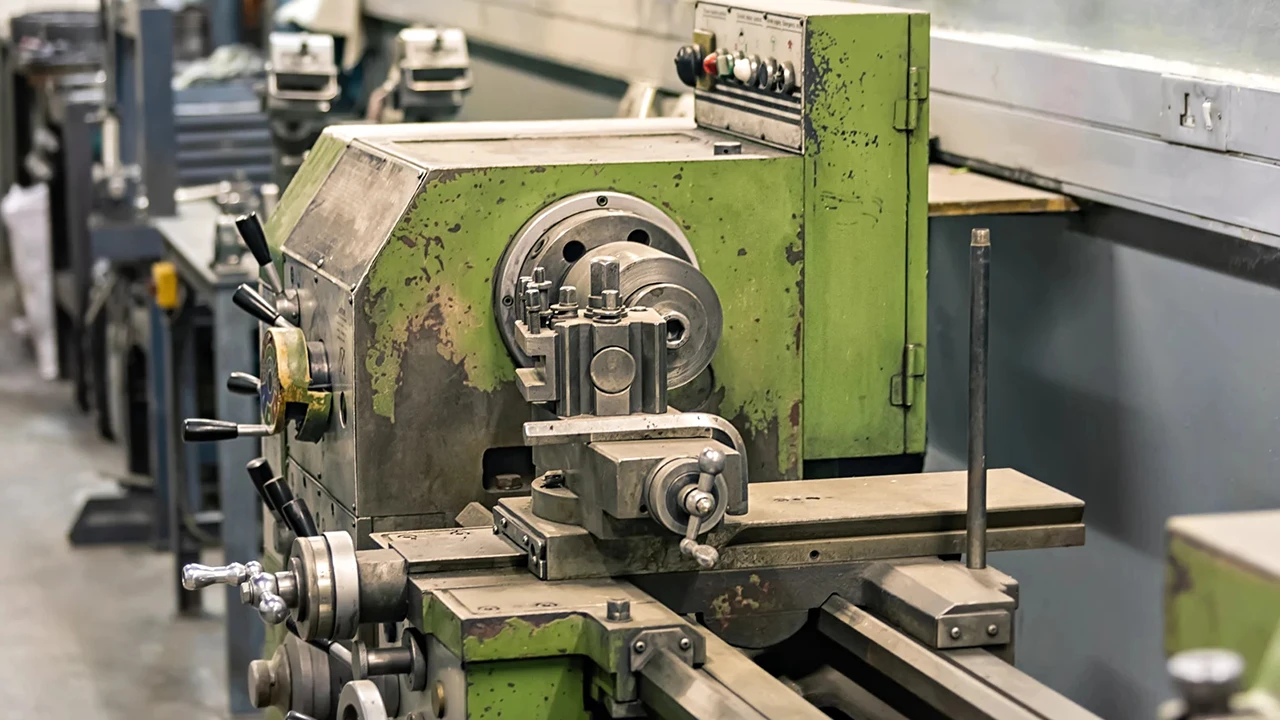
Spare Parts and After-sales Support
Some buyers overlook the ongoing cost of spare parts and support. A low-priced machine may end up costing more over time if parts are hard to source or service is delayed.
Hidden long-term costs include:
- Spare motors, sensors, belts, turrets
- Preventive maintenance (coolant pumps, filters, etc.)
- Remote or on-site diagnostic service fees
- Software upgrades for newer operating systems
Pro tip: Choose a supplier with local spare parts availability, or a partner like Rosnok that offers global logistics + fast support response.
Power and Utility Requirements
High-performance CNC lathes can draw significant power. Machines over 15kW may require:
- Electrical infrastructure upgrades
- Power stabilizers
- Air compressors (for pneumatic turrets, chucks)
If not pre-budgeted, these items could delay your installation and increase operational costs unexpectedly.
Insurance and Compliance
In some countries or industries, buyers are required to insure high-value machines against breakdown, fire, or electrical failure. Also, certification for CE, TUV, or ISO may be necessary to comply with local production regulations.
These can add a few hundred or even thousands of dollars, depending on your region and insurance policy terms.
As you can see, the actual cost of a lathe machine is more than just the sticker price. Factoring in all these hidden costs will help you set a realistic budget and avoid costly surprises post-purchase.
In the next section, we’ll help you match your budget to the right machine by comparing different purchasing strategies.
How to Choose the Right Lathe Machine for Your Budget
Buying a CNC lathe isn’t just about choosing the cheapest or most advanced machine. It’s about understanding your own production goals, cost structure, and operational realities. In this guide, I’ll walk you step-by-step through how to choose the right CNC lathe that fits both your workflow and your wallet.

Step 1: Identify Your Application & Machine Type
Start by clearly defining what you need the lathe to do. Each industry and job type demands different levels of precision, speed, and flexibility.
Ask yourself:
- Are you turning simple shafts or high-tolerance aerospace parts?
- Will you be threading long pipes or machining small electronics?
- Are you working with wood, aluminum, steel, or titanium?
Once you understand your needs, align them with the right machine type:
| Use Case | Recommended Lathe Type |
|---|---|
| Small parts / prototyping | Mini Lathe, Bench Lathe |
| Mass production / general metal | Flat-bed CNC, Slant-bed CNC |
| Pipe machining | Pipe Threading Lathe |
| Heavy castings / flanges | Vertical Lathe |
| Medical / aerospace | Swiss-Type CNC, Universal CNC |
Choosing the correct type will save you from overpaying for unneeded features—or underinvesting and falling short of requirements.
Step 2: Set a Realistic Budget Based on CNC Machine Prices
Before reaching out to suppliers, know the lathe machine price ranges for the type you’re interested in:
| Machine Type | Typical Price Range (USD) |
|---|---|
| Mini / Bench Lathe | $800 – $6,000 |
| Flat-bed CNC Lathe | $8,000 – $15,000 |
| Pipe Threading Lathe | $20,000 – $50,000 |
| Slant-bed CNC Lathe | $15,000 – $30,000 |
| Swiss-Type CNC Lathe | $40,000 – $80,000+ |
| Vertical / Universal CNC | $30,000 – $70,000 |
Setting a clear budget helps you focus your search and avoid wasting time on machines outside your price range.
Step 3: Consider the Total Cost of Ownership (TCO)
Don’t fall into the trap of comparing only sticker prices. What you should really ask is:
“How much does this lathe cost me over 3–5 years?”
Include these key TCO factors:
- Shipping & import taxes
- Installation and setup
- Tooling and workholding
- Operator training
- Spare parts and maintenance
- Power & facility upgrades
Example: A $15,000 flat-bed lathe may require an additional $5,000–$10,000 to get production-ready.
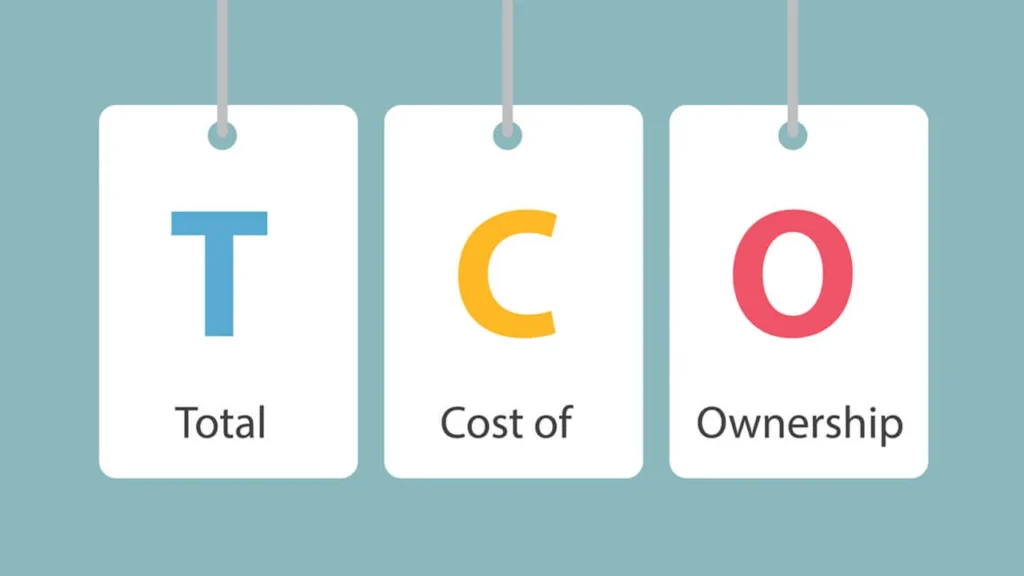
Step 4: Should You Buy a New or Used CNC Machine?
Buying used can save up to 30–50%—but it’s not for everyone.
New Lathe Pros:
- Full warranty
- Latest software/hardware
- Known performance baseline
- Easier financing and service
Used Lathe Pros:
- Lower purchase price
- Faster delivery (if in stock)
Used Lathe Cons:
- Possible hidden wear or defects
- Short/no warranty
- Compatibility issues with new tooling or software
If you’re buying used, always inspect the machine in person or request a full diagnostic report from the seller.
Step 5: Compare Brands & Country of Origin
Brand matters—especially when it comes to service, software, and spare parts.
| Origin / Brand Tier | General Traits |
|---|---|
| China (Rosnok, others) | High cost-performance, fast lead time |
| Taiwan | Good rigidity and electronics |
| Japan / Germany | Top-tier precision, long lifespan, high price |
Don’t just pay for a logo—look for certifications (CE, ISO, TUV) and local service coverage.
Step 6: Check Financing & Leasing Options
If cash flow is a concern, ask your supplier about:
- Installment payment plans
- Leasing options (monthly or annual)
- Equipment financing through local banks
- Trade-in programs for old machines
This allows you to buy a better machine without large upfront costs—and often with tax advantages.

Summary: How to Choose the Right CNC Lathe for Your Budget
To choose the right CNC lathe:
- Know your application
- Set a realistic price range
- Factor in total ownership cost
- Weigh new vs. used
- Choose a trustworthy brand
- Explore payment options
The goal isn’t just to buy a machine—it’s to build a reliable, profitable production line.
7. Where to Buy Lathe Machines
Once you’ve decided on the right machine type and budget, the next big question is:
Where should I buy my lathe machine?
The answer depends on several factors—like how soon you need the machine, whether you require after-sales support, and how confident you are in your supplier.
Let’s break down your main options and how to choose the right one.
Direct from Manufacturer
Best for: Buyers seeking factory pricing, technical support, and customization
Buying directly from a trusted CNC lathe manufacturer is one of the most reliable ways to ensure:
- Authentic specs and components
- Competitive pricing (no middleman markup)
- Full access to customization options
- Direct communication with engineers
- Manufacturer-backed warranty and support
For example, at Rosnok, we not only provide direct factory sales, but also support engineering customization, offer CE/TUV/ISO-certified machines, and ship globally within 10–30 days.
Pro tip: Always check if the factory has experience exporting to your country and can handle customs documentation.
Through Local Distributors
Best for: Buyers who need fast installation, local training, and face-to-face service
Regional distributors often provide:
- On-site installation and maintenance
- Local spare parts and technicians
- Language support and faster response
- Financing options or trade-in deals
However, prices are typically 10–30% higher than factory-direct due to distribution margins. Also, some distributors may limit product options based on inventory.
If you choose a local distributor, make sure they are certified by the original machine brand and not just a third-party reseller.
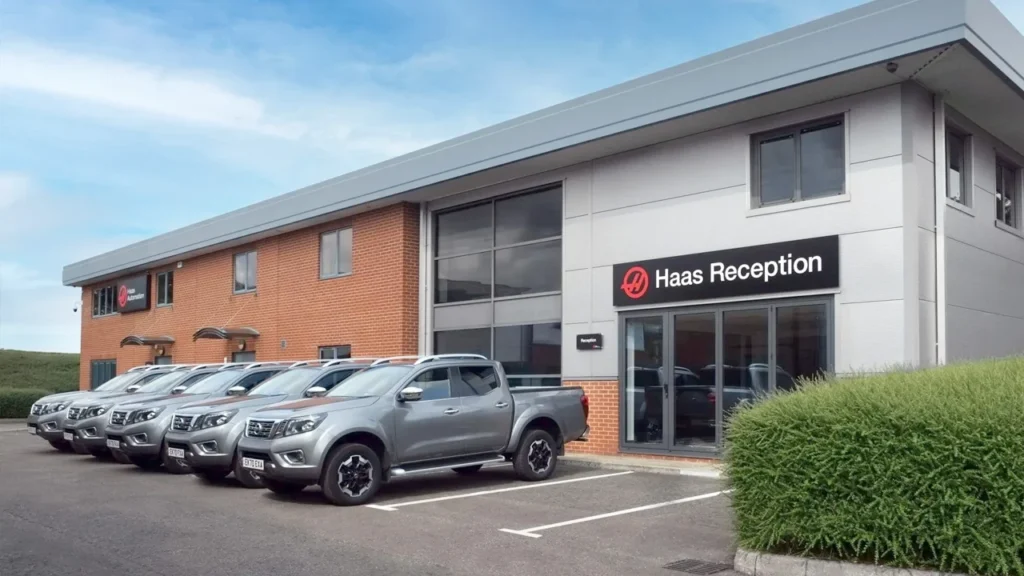
Online B2B Platforms (Alibaba, Made-in-China)
Best for: Buyers comparing many suppliers at once or exploring new options
Platforms like Alibaba, Made-in-China, and Global Sources give you access to thousands of suppliers worldwide. You can:
- Compare lathe machine price lists side-by-side
- Read reviews and see ratings
- Request quotes instantly
- View photos, specs, certifications
But caution is required:
Watch out for:
- Middlemen pretending to be factories
- Incomplete product info
- Delays in communication or unclear warranty terms
If buying from a platform, always check for verified supplier status, company licenses, and video factory audits. Better yet—contact them directly via their official website.

Trade Shows and Exhibitions
Best for: Buyers who want to see machines live, ask questions, and meet vendors face-to-face
Industrial exhibitions such as CIMT (China), EMO (Germany), IMTS (USA) are great for:
- Seeing working demos
- Comparing build quality across brands
- Asking technical questions on the spot
- Networking with service providers and partners
Downside? It’s time-consuming and typically requires travel. But for large buyers or distributors, this is still the most immersive way to make decisions.
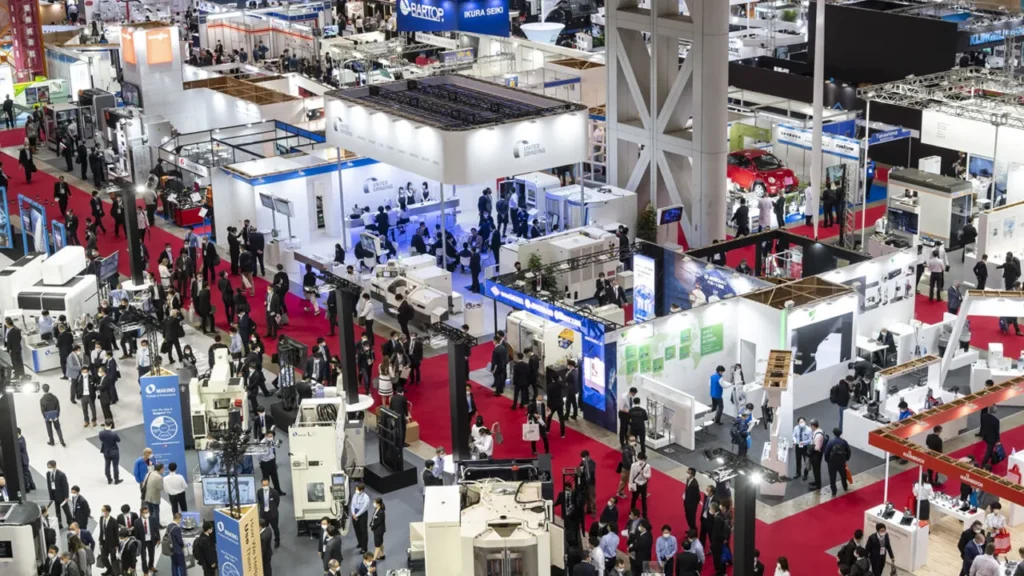
What Makes a Reliable CNC Lathe Supplier?
Whether you’re buying online, through a dealer, or direct from the factory, here are 7 things to check before committing:
- Does the supplier own a certified manufacturing facility?
- Can they provide references or export records to your region?
- Are their machines CE / ISO / TUV / UL certified?
- Do they offer technical drawings and manuals in your language?
- How long is their warranty period (1 year? 3 years?)
- Can they provide after-sales service in your time zone?
- Are spare parts stocked or made to order?
If the answer to most of these is “yes,” you’re probably in good hands.
Why Buyers Choose Rosnok
At Rosnok, we offer the best of both worlds:
- 5 specialized workshops with over 60,000㎡ of CNC production
- CE / TUV / ISO certified machines with 100+ customization options
- In-house design, assembly, inspection, and packaging
- Export experience to 40+ countries (Russia, South America, Europe, Asia)
- Dedicated engineers for after-sales, remote diagnostics, and spare parts
- Verified supplier on Alibaba & Made-in-China, and active at global trade shows
Whether you’re a small workshop or a national distributor, we’re committed to giving you a transparent, professional, and reliable CNC lathe buying experience.
Why Rosnok Offers the Best Lathe Machine Price-Quality Balance
Choosing a CNC lathe isn’t just about comparing specs or finding the lowest price. It’s about investing in a machine that delivers long-term value—in uptime, precision, serviceability, and support. At Rosnok, we understand what industrial buyers and distributors truly care about.
Here’s why so many companies across Russia, South America, Europe, and Asia trust us for their CNC lathe needs.
1. Industrial-Grade Quality Backed by Certifications
Every Rosnok machine is built inside our 60,000㎡ production base with a strict focus on structural rigidity, component accuracy, and long-term durability. All equipment undergoes 100% inspection before shipment.
Our lathes are certified by:
- CE (European Conformity)
- TÜV (Germany Safety Compliance)
- ISO 9001 (Quality Management)
- CSA / UL (For North America, on request)
That means our machines are not just affordable—but ready to meet global industrial standards.
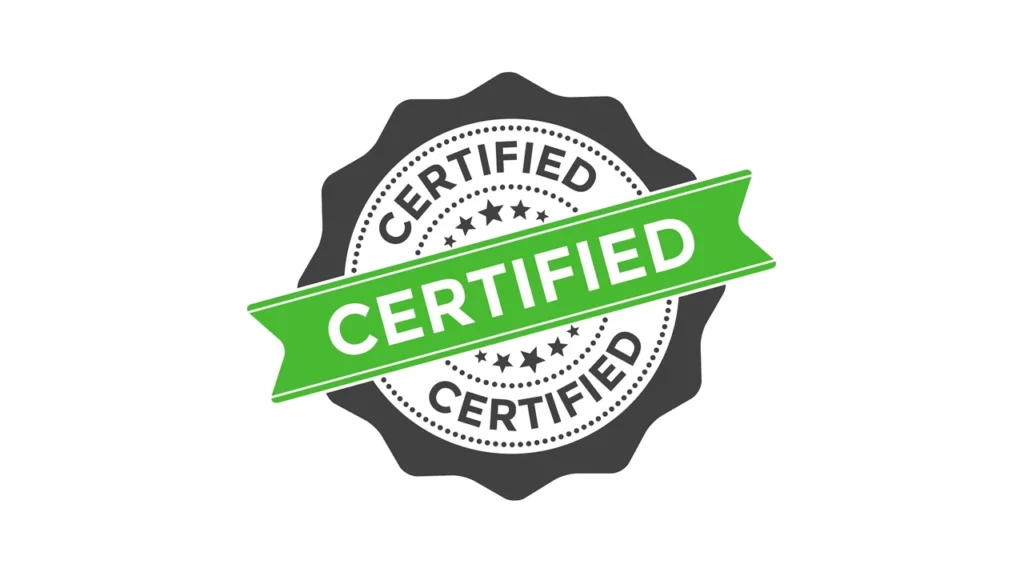
2. High-End Components from Japan and Taiwan
We don’t cut corners on the inside.
Rosnok machines are equipped with:
- HIWIN/PMI linear guides (Taiwan)
- NSK/SKF bearings (Japan/Germany)
- Fanuc, Siemens, GSK controllers (custom selectable)
- YASKAWA / Delta servo drives
- Optional Italian-made spindles or Taiwan ball screws
So while our lathe machine price is highly competitive, you’re still getting top-tier reliability under the hood.
3. Flexible Customization for Specialized Needs
We know that no two customers are alike. Whether you’re machining oil pipes, medical pins, or aerospace castings, we can tailor the machine to your specific workflow.
Available customization includes:
- Spindle bore size
- Bed length and guide rail type
- Control system (GSK / Fanuc / Siemens)
- Tailstock automation
- Live tooling or turret system
- Pneumatic/hydraulic workholding
Unlike many off-the-shelf suppliers, we give you factory-direct engineering access to get exactly what you need—without inflated prices.
4. Responsive Global Support and Fast Spare Parts
Machines break. Tools wear out. What matters is how fast your supplier reacts.
Rosnok provides:
- 24–48 hour technical response
- Video and remote troubleshooting
- Spare parts shipped within 72 hours
- On-site engineer dispatch (in supported countries)
- Clear documentation in English/Russian/Spanish
We don’t just sell machines—we back them up with reliable long-term service.
5. Transparent Pricing and No Hidden Surprises
Many factories promote a low entry-level lathe machine price, but the final quote includes dozens of “extras.”
At Rosnok, what we quote is what you get—including:
- Standard tools and clamping
- Packaging and sea shipping
- Electrical cabinet and operation manuals
- Pre-shipment inspection reports
- Optional DDP quote for full delivery
With us, you’ll never be surprised by hidden charges after your purchase order is signed.
6. Trusted by Buyers in 40+ Countries
We’ve helped over 1,000 companies worldwide upgrade their production lines with CNC turning solutions. Our clients include:
- Automotive part manufacturers
- Oil & gas equipment factories
- Medical device producers
- Job shops and tool rooms
- Regional machine tool distributors
Whether it’s a single lathe or a 10-unit production line, they choose Rosnok because we deliver consistent quality at a fair price.

7. We Build Partnerships, Not Just Machines
Our goal isn’t to sell you one lathe—it’s to become your long-term CNC partner. From project planning to installation, from training to post-warranty upgrades, we’re here to grow with your business.
And because we understand the pain points of global buyers, we offer solutions—not just sales pitches.
If you’re looking for a supplier who combines factory-direct pricing with high-quality machines, certified components, flexible engineering, and fast global support—Rosnok is the name you can trust.
Let’s build your next production solution together.
Practical Price Advice for Distributors and Industrial Buyers
Whether you’re a regional distributor looking to expand your machine lineup or an industrial buyer sourcing for a high-volume production line, understanding how to approach lathe machine pricing can make or break your investment strategy.
Here’s some practical advice we’ve learned from working with over 1,000+ clients across 40+ countries.
For Distributors: Maximize Margins, Minimize Risk
As a distributor, your profit lies in the difference between purchase cost and resale value—but also in after-sales reputation.
Tips for CNC distributors:
- Negotiate tiered pricing: At Rosnok, we offer wholesale pricing models based on quantity tiers (e.g., 1–5 units, 6–10 units, 10+). The more you buy, the lower your per-unit price.
- Choose scalable models: Prioritize machine types with wide application potential like Flat-bed CNC and Slant-bed CNC, which serve multiple industries.
- Ask for regional exclusivity: If you’re selling in Russia, South America, or Eastern Europe, Rosnok supports exclusive territory agreements based on minimum purchase commitments.
- Bundle accessories: Distributors who include basic tooling or workholding in their packages often increase resale success while reducing client onboarding costs.
- Request co-branded or OEM options: We can white-label or customize panels, packaging, and manuals to reflect your dealership identity.
Bonus tip: We offer container consolidation & mixed-load shipping, which lets you combine lathes, milling machines, and accessories into one freight order—saving on logistics.

For Industrial Buyers: Think in Cost per Part, Not Just Price
If you run a factory, your focus should be less on the machine’s price—and more on the ROI per part produced.
Here’s what matters most:
- Total cycle time: Faster spindle speed or automated tool changes directly reduce cost-per-part.
- Uptime percentage: Choose machines with proven reliability and local support options to avoid expensive downtime.
- Maintenance and spare part cycle: How long do components last? How fast can they be replaced?
- Multi-function capability: Can the same machine handle different products or setups?
- Energy efficiency: Especially in Europe and Asia, power consumption is now a major TCO factor.
Example: A slant-bed lathe costing $25,000 that runs 18 hours/day for 5 years could save more money than a $15,000 flat-bed that breaks every 2 months.
How Rosnok Supports Smart Buying Decisions
For both distributors and factory clients, Rosnok provides:
- Factory-direct tiered pricing plans
- Bulk customization for volume orders
- Delivery documentation (CE, ISO, Form E, Certificate of Origin)
- Pre-sale technical consulting for layout planning
- After-sales training for distributor teams or factory engineers
- Regional market insights from 10+ years of export experience
Whether you’re reselling or using our machines in production, we want your purchase to be profitable, scalable, and easy to maintain.
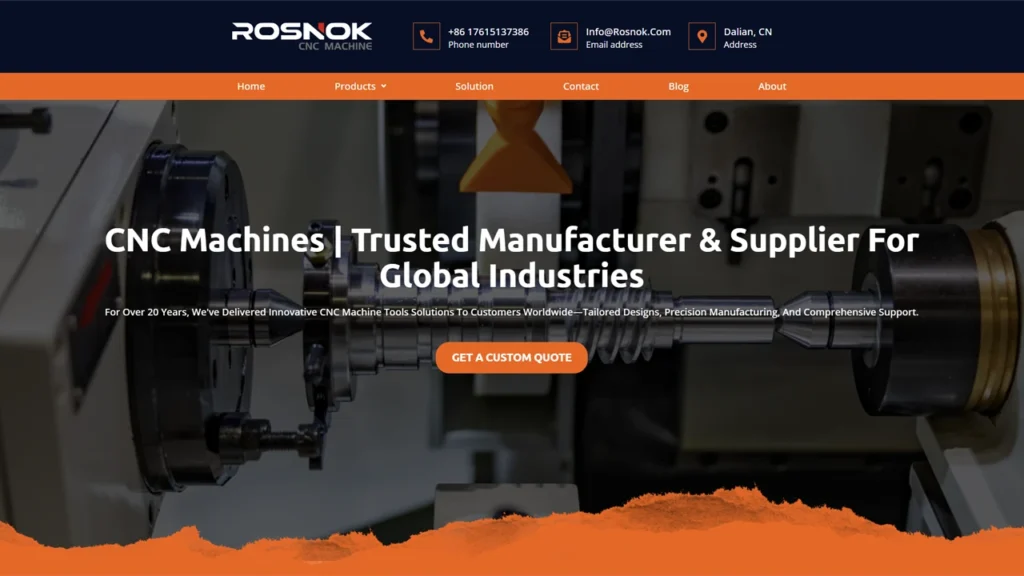
Conclusion and Call to Action
In summary, understanding the lathe machine price goes far beyond the initial sticker—it’s about knowing exactly what you’re investing in. Each CNC lathe type offers a unique set of features, performance levels, and long-term benefits. From manual and bench lathes for basic applications to advanced Swiss-type machines for ultra-high precision, the right machine can optimize your production process and improve your overall ROI.
By carefully evaluating factors such as machine structure, spindle performance, automation levels, and even maintenance and repair costs, you can make a well-informed decision that fits both your immediate budget and your future growth plans.
At Rosnok, we’re committed to providing not only competitive pricing but also comprehensive support throughout your machine’s lifecycle—from pre-sale consultation and customization to installation, training, and reliable after-sales service. If you’re ready to upgrade your production line or want to explore a tailored solution, let our team of experts help you achieve the right balance between cost and quality.
Contact us today or visit website to request a free consultation and discover how a Rosnok CNC lathe can drive your business forward.



